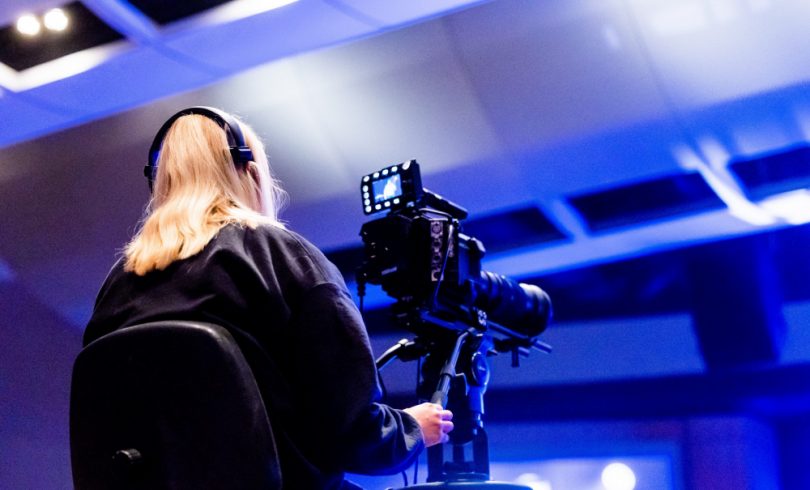Live Streaming 101
Most organizations have their own way of doing things; thankfully, great live streams can be accomplished through a variety of methods–meaning there’s a strategy to suit everyone!
For those who have yet to master the art of live streaming and develop their own methods, however, the process can seem daunting–and even a little overwhelming. While there is no one way to build a guaranteed-successful live stream, your organization can dramatically improve its odds of triumph by following a set of tried and tested guidelines.
That’s where we come in! Today, we’ve compiled a list of steps that can serve as a helpful roadmap, filled with tips on where to start and what to look out for. Before long, your organization will have high-quality live streams up and running. Your audience will thank you for it!
1. Simplify Your Setup
It can be tempting to go out and get the biggest and best live stream setup available, but unless you really know what you’re doing, it might be better to opt for something more simple at first. The more components your setup has, the more complex your system is, and the greater the room for error.
Remember, a simple setup can still generate an extremely high quality live stream if done right!
In the beginning, your organization should focus on mastering live stream basics. Use only the most crucial tools and components to lower your odds of facing technical errors. With enough experience over time, you’ll build a more informed understanding of what you lack and what you can upgrade in order to improve.
Remember to KISS: Keep it Simple, Silly. Take things one step at a time!
2. Plan, Test, Practice
Long before you take your stream live, you should have a plan drawn up.
Think:
- What parts of the event will be streamed?
- Where will the cameras be positioned?
- Does the lighting look good from every (filmed) angle?
- Does the audio pick up clearly on every camera?
- Who is operating what equipment, and when?
Be sure to check each piece of equipment that you plan to use, and do a rehearsal “test run” before starting up the live stream engines. It’s also wise to try the stream out on multiple devices to see how everything looks and runs before going live.
Finally, it’s not a bad idea to have a backup plan in place should anything go wrong. Even a quality smartphone or two can do in a pinch!
3. Getting Connected
Your internet connection and choice of streaming methods are every bit as important as the technical setup itself.
Assuming you’re using the internet, it’s always best to use a wired connection whenever possible. WiFi is convenient, but if it blips, you could encounter problems. It’s also good practice to set up an isolated connection so that no other users can interrupt your connection.
When deciding on the quality to generate for the stream, you’ll need to know a few things:
- What bandwidth is available to you?
- How many attendees are expected?
- How long is the stream?
Generally, you’ll want a bandwidth that is two times that of the desired stream bitrate.
4. Changing the View
Depending on the technology you have available to you, your live stream could benefit from multiple camera angles and perspectives.
If you have the resources, try setting up different cameras to catch different aspects of the presentation. With a video switcher, you can move between cameras with the click of a button. You can also create presets on the switcher to catch more unique and dynamic shots, including things like:
- Microphone closeups
- Projector screen views
- A Q&A angle
- Even the audience!
The type of switcher you use is completely up to your personal preferences and budget–there’s one to suit every association, so don’t be afraid to look into them.
No matter the tools you choose, presenting a variety of camera angles and perspectives can break up the monotony of a single shot and give the audience a more dynamic experience. This can go a long way in simulating actually being present at the event as well–making viewers feel more engaged and “in the moment”!
5. The Skinny on Encoding
Encoding is the process of turning a recording into a live stream. The technology used to do this varies considerably. Your organization may choose between a free encoder, software, or hardware. Before you choose one method, look into the pros and cons of each and decide on which would be the best fit for your organization and event.
You’ll also need to decide how you want the streams transcoded to your viewers: do it yourself onsite, or have another organization take care of it offsite?
Many streaming services now allow you to submit a single stream at the highest possible bitrate and then permit viewers to choose their preferred quality. As always, consider your audience and what would work best for them.
6. Start Early and End Effectively
One of the best ways to ensure that viewers join the live stream on time is to start the stream before the actual event is set to begin. Open the virtual room ten or fifteen minutes early and let your audience join and get comfortable. You can even chat with participants while you wait!
Additionally, if your stream doesn’t start until the last possible minute, you shouldn’t expect viewers to join early. While some early visitors may wait patiently for a stream to start, a blank screen or a black screen may give them the impression that your live stream is experiencing technical difficulties. Instead, give early visitors a sign that you are on schedule. You could:
- Stream the empty stage
- Stream a graphic indicating the stream will begin soon
- Talk with early joiners (like a pre-show meet and greet!)
Whatever method you choose, letting your audience in early and notifying them of the event start time will ensure that everyone is ready to go when you are.
When it comes time to end the stream, you should avoid the fade-to-black method. The period after a stream ends is a great opportunity to present a call to action, such as encouraging members to sign up for the next event or directing viewers to your organization’s website.
But wait, there’s more! Many stream locations also provide a video replay, which allows viewers to rewatch the stream to catch up on anything they missed–a great way to help your audience to get the most out of your event.
7. Record and Store all Content
While you may not want to live stream everything at your event, if you have the technology and the cameras available, it can be incredibly beneficial to record each session. You never know when something will become useful, and storing the additional video shouldn’t take up too much space. Remember: it’s better to have it and not need it than to need it and not have it!
After the event, you can look into various ways of repurposing the content or adding the material to other areas. You may want to turn recorded sessions into on-demand webinars for your association (which can help you earn more non-dues revenue!) or cut it into snippets to help market your association and promote future events.
Finally, these recordings can also give your organization plenty of test material to see what works and what doesn’t, helping you improve your future live streams. The more streams you host, the more experience you’ll gain, and the better value you (and your members!) will reap from it.
You may also like: We’re All Watching: Why Video is the Most Engaging Medium
Conclusion
In the end, mastering the art of live streaming requires a little planning, a bit of technical know-how, and a solid commitment to delivering high-quality content to your audience. By following the steps above, hosting lots of informative streams, and improving your approach with every event you throw, you’ll soon be leading engaging and successful live streams that captivate and connect with your audience!
Sources
Live Streaming Tips: The Dos and Don’ts. (2018, January 31). Retrieved from Epiphan Video website: https://www.epiphan.com/blog/live-streaming-dos-and-donts/
Orlin, J. (2014, July 1). 10 Best Practices for Live Streaming Production. Retrieved August 27, 2021, from Streaming Media Magazine website: https://www.streamingmedia.com/Articles/Editorial/Featured-Articles/10-Best-Practices-for-Live-Streaming-Production-97980.aspx?utm_content=6767011&utm_medium=social&utm_source=twitter
Sheldrick, J. (2020, March 31). 21 live streaming tips every content creator needs to hear. Retrieved from Epiphan Video website: https://www.epiphan.com/blog/streaming-tips/



